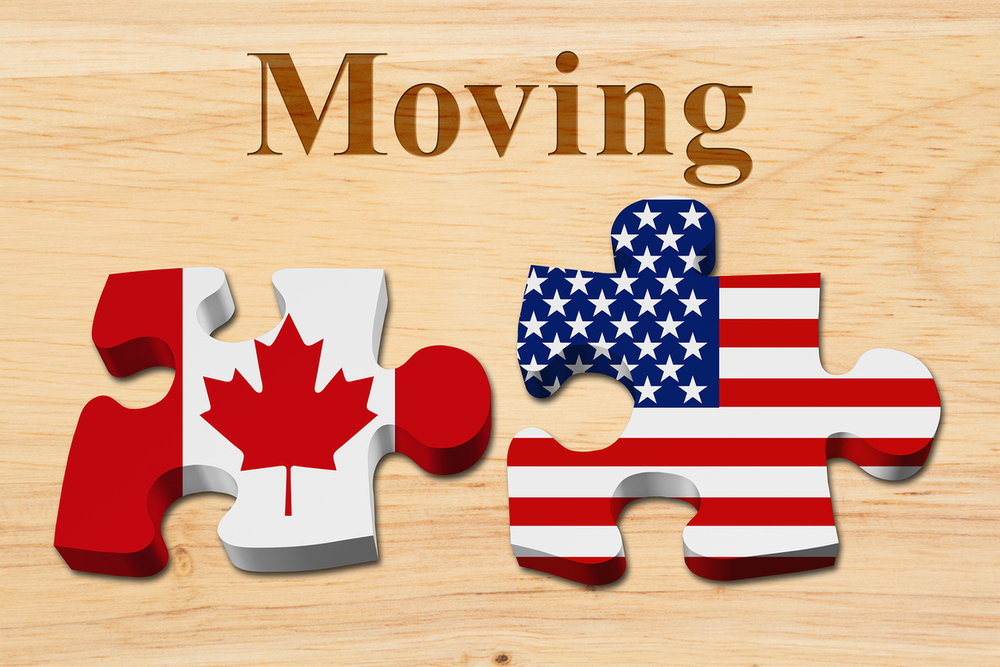The article “Moving To The U.S.? Here’s What To Do With Your Canadian Investments” was originally published on MoneySense on June 26, 2019.
Set to start a new job south of the border, Justin will need to consider that registered and non-registered accounts are treated differently.
Q. I’m planning on taking a job in the United States next year and was told that I need to close my TFSA and other Canadian accounts before the end of this year, due to American tax rules. (I’ll become an American tax resident next year.) Is this true—and, if so, what else should I do to prepare? Should I keep my savings and investments in Canada, or move them to the U.S.?
–Justin
A. Congrats on the new gig, Justin. It sounds exciting. And you’re right to start planning for the financial aspects of your move, as leaving Canada for the U.S. carries several investment, tax, estate and general financial implications.
With regards to your investments, there are different considerations for different accounts. It may be advisable to transfer bank and non-registered accounts to the U.S. simply for ease of access in your new location. It may also help you solidify your Canadian non-residency, which can be important to ensure you are no longer subject to tax filings in Canada.
When you leave Canada and you have non-registered accounts in this country, if you have any accrued capital gains, they’re triggered upon departing. So, for the purposes of Canadian capital gains tax calculations, it’s as if you sold the investments anyway.
It’s a bit different for U.S. tax purposes. If you leave non-registered investments in Canada, and sell them after you’ve entered the United States, the capital gain will be based on your original purchase price, even though you already paid tax to Canada on departure. As such, it may be advisable to sell your Canadian non-registered investments immediately before leaving, and stepping up your cost base even if you plan to leave the investments in Canada afterward.
Some Canadian financial institutions will require you to close non-registered accounts when you become a non-resident. You should notify them of your impending change of address, because it may impact the investments you can buy and the withholding tax on your investments. If they respond that you need to close the accounts, that helps make your decision for you.
There are withholding tax rates of 15% on dividends and mutual fund or exchange-traded fund (ETF) distributions, but interest is not subject to withholding tax for U.S. residents. The financial institution sends this withholding tax right to the Canada Revenue Agency, and this represents your only tax obligation to CRA on the investments. Capital gains on non-registered investments sold by a non-resident are not subject to tax in Canada.
You won’t be able to buy Canadian mutual funds as a non-resident, but you can continue to hold existing ones. If you own Canadian mutual funds, ETFs or real estate investment trusts (REITs) in your non-registered or TFSA accounts, you will be subject to Passive Foreign Investment Corporation (PFIC) tax reporting in the U.S. The income may be subject to higher tax rates, additional tax filings, and may make holding these types of investments while you’re a U.S. resident inadvisable.
TFSAs remain tax-free for Canadian tax purposes (no withholding tax) but are subject to tax in the U.S. They are also considered foreign trusts and require additional tax reporting. Even though you can keep a TFSA after leaving Canada, it may not be beneficial to keep one open.
RRSPs remain tax-deferred for Canadian tax purposes, and tax can also continue to be deferred in the U.S. at the federal level. However, some states may tax RRSP income annually.
There is no opportunity to roll over a Canadian RRSP into the U.S. equivalent—the Individual Retirement Account (IRA)—and some people keep their Canadian RRSPs forever, even if they retire in the U.S.
When you take a lump-sum withdrawal from an RRSP as a U.S. resident, you are subject to 25% withholding tax. If you take periodic withdrawals, like in retirement, you can be subject to a lower rate of 15%. Periodic withdrawals are defined as twice the RRIF minimum for your age, or no more than 10% of the total value.
One consideration for someone who expects to stay in the U.S. for the long run, especially if they have a large RRSP, is how the U.S. taxes RRSP/RRIF withdrawals. There is a formula based on the market value of your entire account at the time of the withdrawal and the original cost base at the time you entered the U.S. If you have large deferred capital gains in your RRSP before moving to the U.S., it may, therefore, be advisable to step up your cost base by selling and even immediately reacquiring the same or different investments. This won’t trigger Canadian tax, of course, because an RRSP is tax-deferred. Although it may trigger transaction costs, it could save you U.S. tax down the road if you are withdrawing from your RRSP/RRIF while still a U.S. tax resident.
This summary is hardly exhaustive, as there are lots of other considerations. And there are lots of other potential accounts a departing Canadian could have, like RESPs, corporate accounts and trust accounts, let alone other assets like real estate, insurance policies, etc.
Getting professional advice is a good idea in many circumstances, and making a big move like you are doing is a strong reason to seek out input on tax, estate and other financial considerations. Good luck in your new role, Justin.
Jason Heath is a fee-only, advice-only Certified Financial Planner (CFP) at Objective Financial Partners Inc. in Toronto, Ontario. He does not sell any financial products whatsoever.

